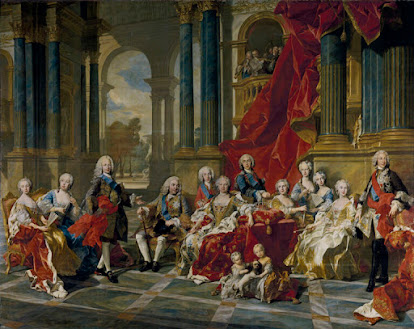The Finding of Morality in the Classical Era
ERA OF CLASSICAL ART
The Classical Era of art consisted of two popular styles; rococo and neoclassical. With rococo art coming first it was detailed as light-hearted, rich and delicate, pastel colors, curving shapes and more. Artists looked at rococo art as the enjoyment of art making. Although it can be seen as romantic at time, it usually did not reflect real life in any way, shape or form. Rococo art influenced the art within that time until around 1775, bringing in the Neoclassical style. The characteristics of Neoclassical consisted of simplicity through its linework and colors. This style consisted of moral virtues, self-sacrifice, and good deeds. It also was seen as capturing a specific moment and turning that into an art piece.
CONNECTION WITH MORALITY
The connection between classical art and morality have different ways of being shown. The Rococo style didn't embrace morality as it was believed that during this era "rococo style was a symbol of the moral decline of the French Leadership." (Hallan) This style began to be replaced due to the want of morality within art. As mentioned, it was a style of the enjoyment of art making and didn't focus on conveying a moral message or meaning. On the other hand, Neoclassical symbolized morality to be implicated in the art world. It had the main belief that art should portray absolute righteousness and a moral message. Therefore, the artwork during the Classical era depicted how morality was shown through these two styles. We will dig deeper talk more about this in every piece shown as well.
This painting by Jean-Honoré Fragonard, The Stolen Kiss was created in France 1787. It is an oil on canvas painting with the dimensions of 19x25in. Upon looking at this painting, you can feel the nervousness and romance of it. As the young girl receives the kiss you can feel the nervousness but profound love she had for her lover. This painting portrays a frozen moment in time of a passionate secret romance. During those times, courtship was popular amongst the women with intimacy and marriage. It seems as though these two individuals were not supposed to be intimate with one another as you can see the young women is leaning in for a kiss but looking away. The nervous look was detailed as "the knowledge of the coming storm" (Artble) as she knew this romance couldn't last.
Cornelia, Mother of Gracchi, Pointing to her Children as Her Treasures by Angelica Kauffman. 1785. London/Rome.
MY OPINION
Each piece is so beautifully made and has a message to each one which makes you feel interested. The Stolen Kiss is a show of profound love and secrecy which makes it such an admiring piece. I can relate to it as I have had a hard time of being able to show love as that isn't usually how I look to present myself. While Stolen Eggs has such a deep but true message to be shown that it makes it such a great piece. Lastly the painting of Cornelia and Her Children is such a thoughtful and loving piece as I am sure all mothers feel the same. I believe all of these pieces should be within exhibits or museums as they should be seen by as many people as possible. I don't think I would own these within my own home as they wouldn't go with the aesthetic that I prefer but that doesn't take away their beauty.
“Broken Eggs.” The Metropolitan Museum of Art, 2024, www.metmuseum.org/art/collection/search/436579.
“The Stolen Kiss.” The Metropolitan Museum of Art, 2024, www.metmuseum.org/art/collection/search/436325.
Martin, Dana. “Angelica Kauffmann, Cornelia Pointing to Her Children as Her Treasures.” Smarthistory, 7 Jan. 2016, smarthistory.org/angelica-kauffmann-cornelia-pointing-to-her-children-as-her-treasures/.
Hallan, Noelle. “Morality and the Art of the Classical Era.” Noelle Hallan’s Art Blog ’16, Wordpress, 29 Feb. 2016, nhallanartblog.wordpress.com/2016/02/29/morality-and-the-art-of-the-classical-era/.
tlkester. “Morality and the Art of the Classical Era.” Tlkester, Wordpress, 16 Oct. 2013, tlkester.wordpress.com/2013/10/16/morality-and-the-art-of-the-classical-era/.
Jones, Muffet. “The Rococo and Neoclassicism.” Introduction To Art, Boise State University, 2024, boisestate.pressbooks.pub/arthistory/chapter/rococo-and-neoclassicism/.
“The Stolen Kiss.” Artble, Artble, 2024, www.artble.com/artists/jean-honore_fragonard/paintings/the_stolen_kiss.
“Jean-Baptiste Greuze.” The Art Story, 2024, www.theartstory.org/artist/greuze-jean-baptiste/.





Comments
Post a Comment